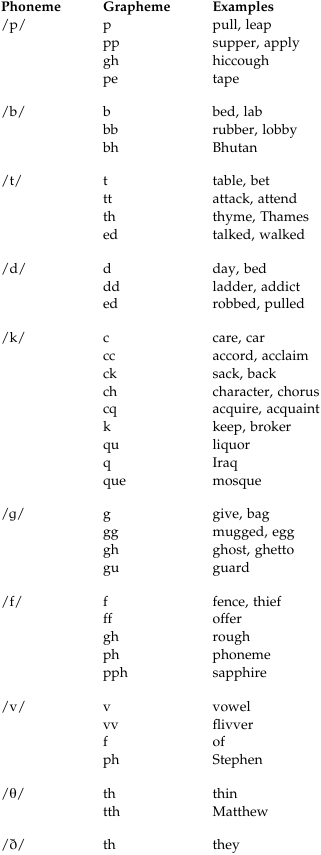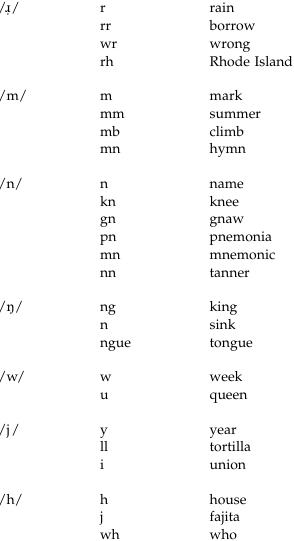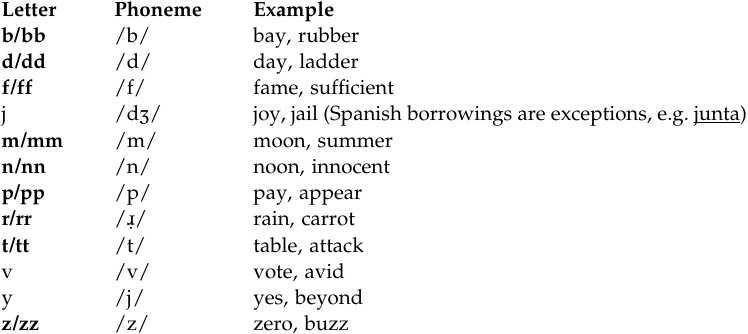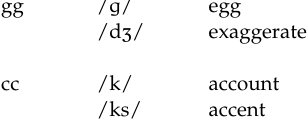
Phoneme–Grapheme Correspondences in English Consonants
 المؤلف:
Mehmet Yavas̡
المؤلف:
Mehmet Yavas̡
 المصدر:
Applied English Phonology
المصدر:
Applied English Phonology
 الجزء والصفحة:
P231-C8
الجزء والصفحة:
P231-C8
 2025-03-21
2025-03-21
 1720
1720
Phoneme–Grapheme Correspondences in English
When dealing with the correspondences between graphemes and phonemes we start with the list of phonemes, and the graphemes used to represent them.
Consonants



If we look at the correspondences in the reverse direction, that is, from grapheme to phoneme, the relationships are less diverse. First of all, several letters in the following list have regular phoneme correspondences. The ones given in bold type also have this regular correspondence in double letters.

Two letters, c and g, each have two corresponding phonemes:

The letter sis the most prolific consonant, with the following correspondences:

It also has the following correspondences as a single letter:

The letter x is the only consonant that stands for a sequence of two phonemes; it represents /gz/ if the vowel following is in the tonic syllable (e.g. exact, exaggerate). If the stress falls on the vowel before x, then it corresponds to /ks/ (e.g. sex, excellent, execute; a couple of words, exit, exile, may have either /ks/ or /gz/).
Two double letters, gg and cc, have two corresponding values each:

The following five single letters have regular phoneme correspondence as well as being silent:

Finally, we should mention that there are some isolated irregularities, as m is silent in mnemonic, nis silent in autumn (but pronounced in autumnal), and d is silent in handsome, sandwich.
Besides the single and double occurrence of one letter, English spelling makes use of some combinations of consonant letters, with the following phoneme correspondences:

The following two-consonant letter combinations have two different values:

In words and place-names of French origin, ch stands for /ʃ/ (e.g. chef, Chicago).

In a few words, gh stands for /g/, as in ghost, ghetto.

In a few words, th stands for /t/ (e.g. Thomas, thyme).
 الاكثر قراءة في Phonology
الاكثر قراءة في Phonology
 اخر الاخبار
اخر الاخبار
اخبار العتبة العباسية المقدسة


